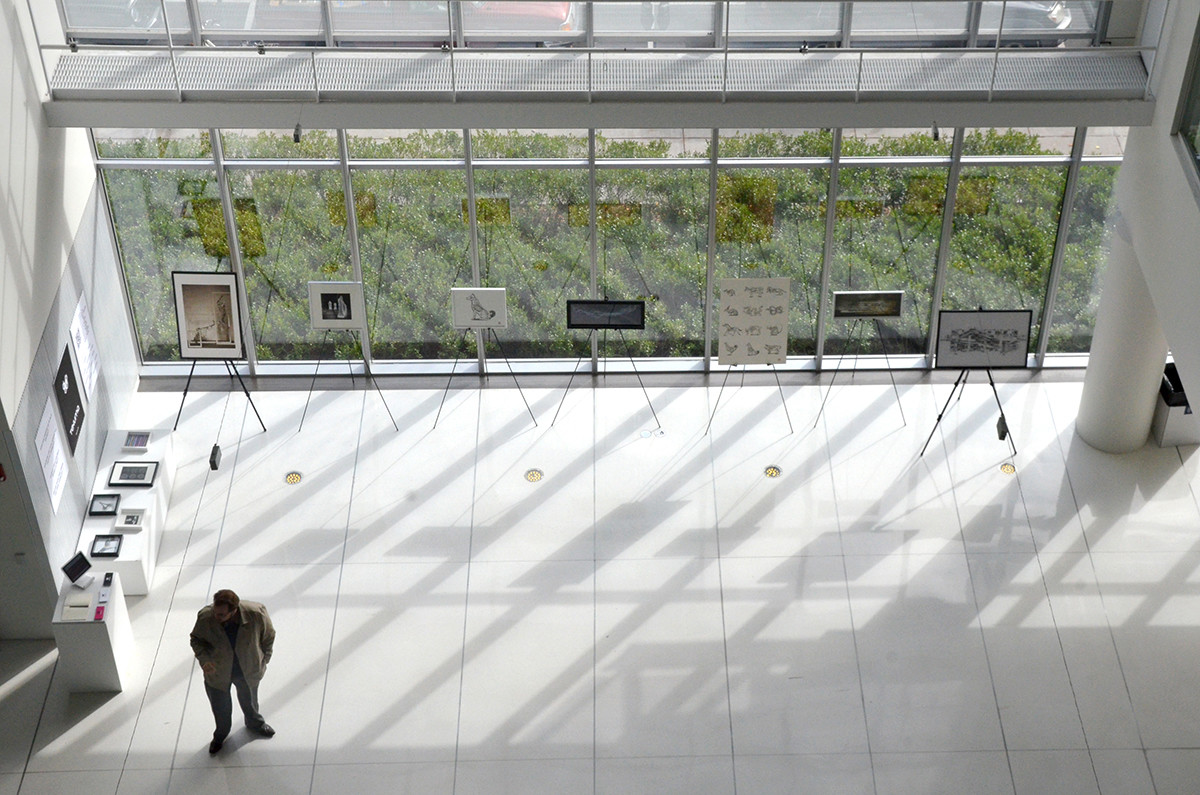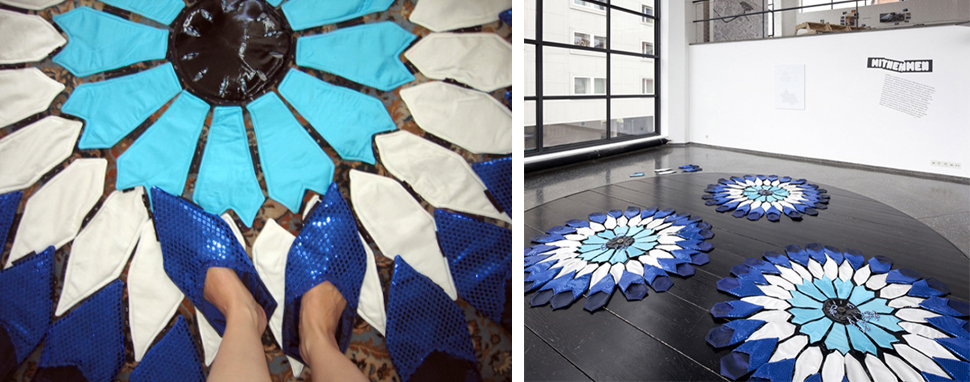Michelangelo had the Medicis, Picasso had Gertrude Stein, and Pollock had Peggy Guggenheim. It is difficult to imagine art history without the support of its most celebrated patrons. For the artistic community at MIT, the vision and financial support of the Council for the Arts at MIT (CAMIT) has made the creative landscape of the Institute a fertile one—with its continual funding for students, faculty and staff since the grants program’s inception in 1974.
Since that time, the Council’s Grants Committee has awarded more than 1,500 grants and several hundred Director’s grants.
Susan Cohen, Director of CAMIT, says, “Throughout many years as director of the Council for the Arts at MIT, the grants program has remained the ‘heart’ of CAMIT. The grants budget is the result of annual contributions from the CAMIT members. What makes the program truly unusual is that the donors are the proposal reviewers, and they make the funding decisions. The breadth of the projects that have been supported over the years is remarkable. From funding the prototype of a sculpture installed for the Athens Olympics, to replacing the MIT Marching Band’s stolen sousaphone, CAMIT’s grant program supports virtually all types of art.”
At a recent “Grants Showcase,” a selection of grants recipients presented projects that ranged from arts-focused entrepreneurial pursuits to pedagogical tools to purely creative endeavors. Below are descriptions of some of these varied projects.
CAMIT Grants Recipients
One Day I too Go Fly
Filmmaker Arthur Musah (’04, MNG ’05), who was born in Ukraine and raised in Ghana, studied electrical engineering and computer science at the Institute, before becoming an Annenberg Fellow in the graduate film production program at USC’s School Of Cinematic Arts. For his documentary, One Day I Too Go Fly, he follows the lives of five African students (from Tanzania, Nigeria, Rwanda, and Zimbabwe) from the Class of 2015 over the course of their four years at MIT, as they study civil engineering, chemical engineering, electrical engineering and computer science. In this documentary, Musah aims to uncover the evolution of the relationships these students have with their native countries and how their time at MIT influences their dreams to make an impact on the world.
Tekuma
Tekuma is a venture that combines hospitality, real estate and art galleries. Tekuma’s co-founders, CEO Marwan Aboudib, COO Kun Qian and CPO Tengjia Liu – who met during their first semester of their Master of Architecture program at MIT– hope to connect travelers to local culture and talent, as well as to connect artists to potential collectors. Tekuma launches its first gallery within an Airbnb by the Art Basel venue in Miami Beach from December 4-6, 2015. The apartment will host exhibits under the theme, “I am not an artist.” Featured artworks are by MIT students from various disciplines and curated by Tekuma’s founders. With this exhibition, “Our goal is to promote the arts community from a school mostly stereotyped for engineering and science,” the founders say.
Mosque Manifesto
ACT Assistant Professor, Azra Akšamija’s monograph, Mosque Manifesto–Propositions for Spaces of Coexistence, offers a repertoire of ways that creative forms of Islamic representation can foster better understanding between cultures and generate critical responses to cultural stereotypes and politics of representation. Written in the form of a manifesto, this monograph brings together a unique range of mosque-themed projects created by Akšamija, who is both an artist and an architectural historian.. The first all-encompassing publication of Akšamija’s vast body of work on the topic of the mosque, this monograph features 177 color pages of Akšamija’s innovative designs, including wearable mosques. Offering a unique approach to designing mosque architecture, the book deconstructs the formal and conceptual definitions of the mosque, envisioning them as a performative space to foster dialogue between cultures.
First-Year Art Programs
First-Year Arts Seminar Advising Program (FASAP) creates an art community for incoming first-year students who want to make work together and to explore artistic opportunities around Boston. FAP encompasses several disciplines—visual art, dance, music and video game design. Each of these groups is led by a counselor who oversees a final project. Tiffany Chu, a senior majoring in music and computer science and an Emerson Scholar, was in FAP, and ever since, has been one of the counselors. She says, “A lot of people like me who did a lot of art in high school didn’t want to give that up.” She points out that once students establish a community, they continue supporting each other’s events long after FAP concludes. Council funding helps FAP keep the costs of the program low, enabling eliminating a financial barrier that would prevent many students from participating.
MIT Inspire
MIT Inspire is the first comprehensive National High School Research Competition in the Arts, Humanities & Social Sciences. This award invites applications in 13 different subject areas—from art and architecture to music research to philosophy and linguistics. A team of experts selects the top 100 finalists, who are then invited to MIT to compete for $48,000 in cash prizes. CAMIT co-sponsored one of their top awards. Vaishnavi Rao, one of seven MIT undergraduates who founded MIT Inspire, described how the vision for this project came to her in her high school AP Government class when a scintillating discussion about current events was cut short: “As the discussion unfolded, everyone was really engaged, but all of a sudden the teacher said, ‘Ok, let’s stop. We need to move on and actually learn our AP curriculum.’ At the time I wished that we had had the opportunity and incentive to delve deepy into a topic of interest to us. That is where the inspiration behind the idea came from.” After only one year, they many high school teachers have already incorporated the competition into their curricula or have created school clubs around the research projects.
Next Act
NEXT ACT is student theatre group dedicated to presenting an annual, full-length musical production during MIT’s Campus Preview Weekend each spring. Members come from across campus and include both beginner and veteran actors. Anyone who auditions for an acting role is guaranteed to be cast in a speaking-role, regardless of experience. Students comprise both the cast and the tech team, and the theater is in their dorm, Next House.
MIT Festival Jazz Ensemble
MIT Festival Jazz Ensemble (course 21M.442), founded in 1963 by Boston jazz icon Herb Pomeroy, is composed of undergraduate and graduate students studying a wide variety of fields. This advanced 18 to 20-member big band/jazz ensemble performs traditional and contemporary jazz ensemble music, including student compositions and new works written for the FJE by major jazz composers. Improvisation is a prominent part of the FJE experience. The ensemble’s instrumentation includes 4-5 trumpets, 4 trombones, 5 saxophones, piano, guitar, vibraphone, bass, and drums/percussion. Other instrumentalists interested in auditioning are encouraged to do so. The FJE performs four concerts per year and frequently features major jazz artists, such as: Chick Corea, Joe Lovano, Kenny Werner, Don Byron, Ran Blake, Steve Turre, Guillermo Klein, and Jason Moran.






